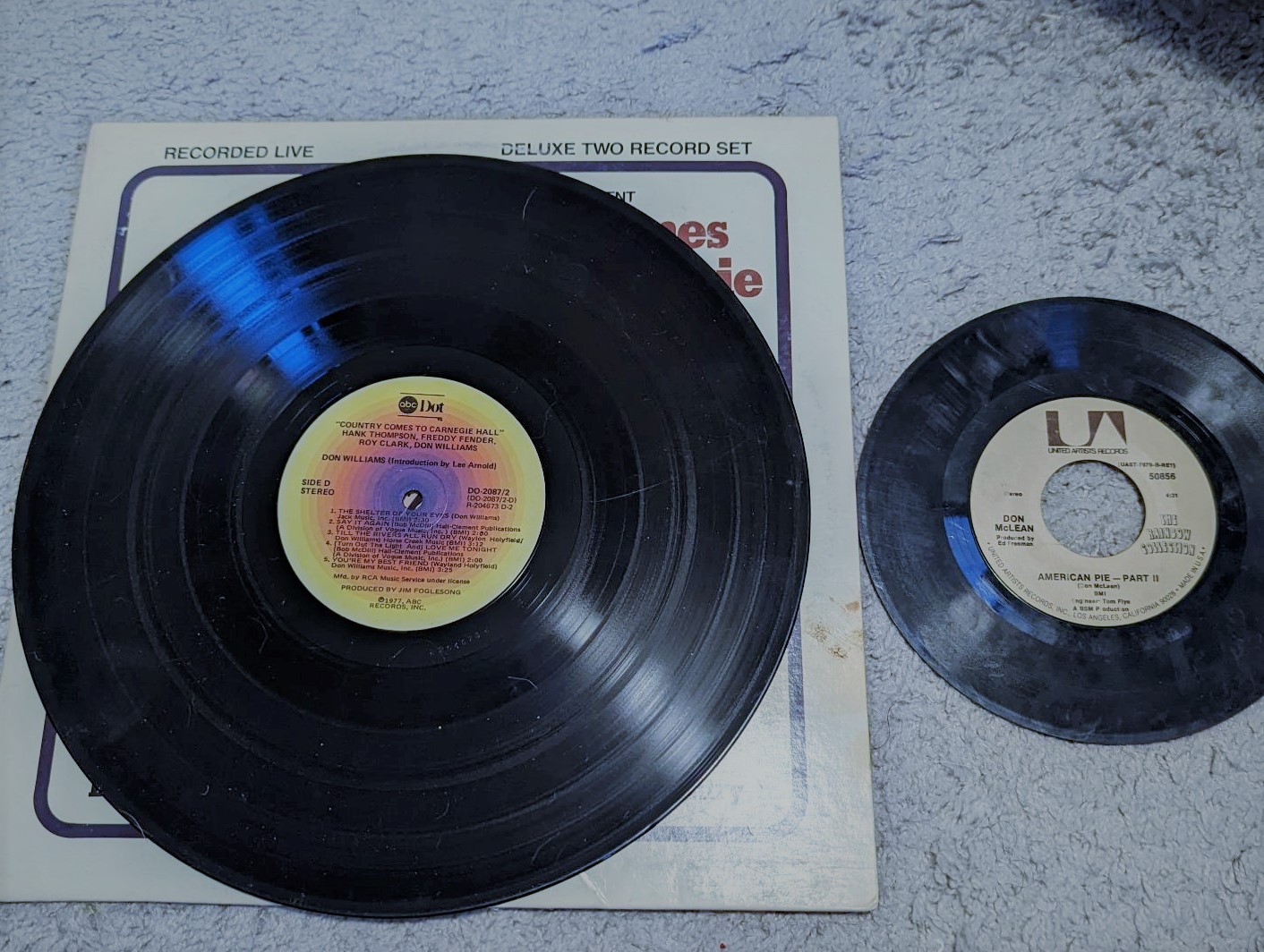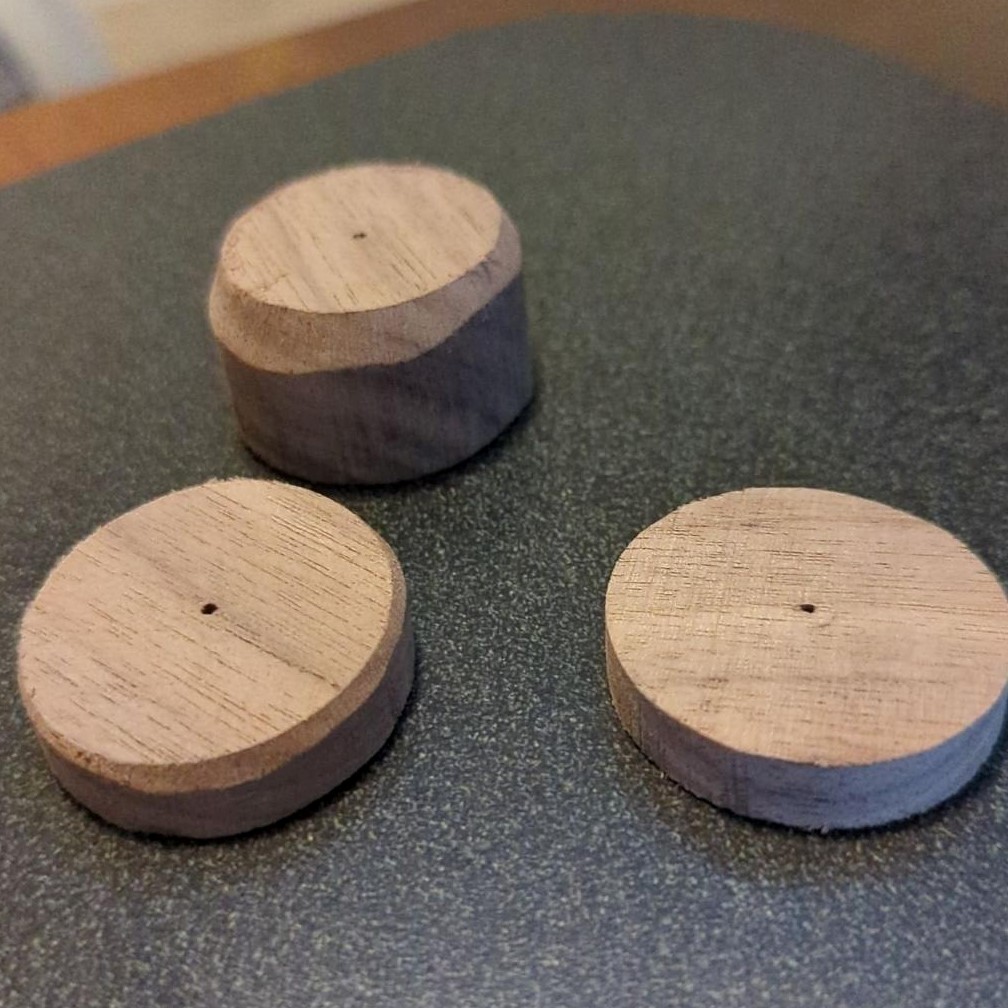Making an LP to 45 Record Converter using different media Part I
Thu 22 September 2022Making a 45 record converter
Music is great, and a lot of people love the old vinyl. I'll be honest, I love it myself, I have fond memories of being a kid in my parent's room listening to Snoopy and the Red Baron...
Recently my dad moved here to South Carolina, and his 45 record converter got lost. What's a 45 record? Lets cover that real quick.
Record types
There are several types of records, but there are two popular sizes I know about. The 45 and the 30 (or Long Play [LP]). Most record players you've probably seen are for LPs. The have a tine spindle and fill up the entire player surface. These records have many songs on each side.
45 records are smaller, with a wider opening. They usually have one song on each side.
Where do the names 45 and 30 come from? That's the RPM required to play the record so it sounds correct.

The record on the left is an LP, the one of the right is a 45. The converter goes into the inner hole of the 45 so that the spindle will sit inside and hold the 45 in place.
Now what?
Now that we have had a mini course in records, what happens now? Well, on the maker journey, you have inspiration. For me, this came while smoking a cigar in my back yard one night. I thought "Hey, I have some small pieces of walnut! I can make tiny disks out of those, drill a hole in the middle, and that should work!".
After work one day, I went out to the garage, fired up the bandsaw and disc sander up, and this is what I came up with.

They aren't done... but you can see they aren't very "circular". Not only do I need to drill out the hole for the spindle, I have to reshape them. The are all a tiny bit too big for the 45. The best way to handle this is to take it to my disc sander, and sand away. Even then, because I'm not perfect, they wont be perfectly round, which may throw the record player off a bit.
I'll keep you updated! I'm going to go finish these up, and also try a different approach. One my dad suggested originally, making it on my 3d printer. I always end up doing this, because I'm still building confidence in myself as a maker. When I'm building for others, I always make spares with a slight differences, so I can see what works for them.
Next time, I'll walk you through a super quick design in the digital space, and walking through how I convert that digital design into real world plastic!
 SC Selvy
SC Selvy